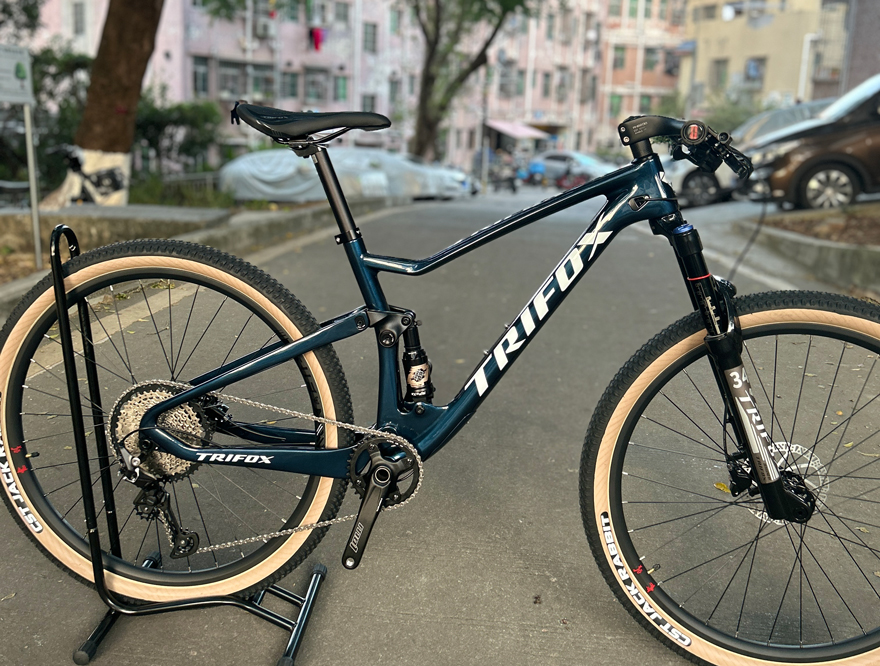
Cross country mountain biking embodies the spirit of adventure, offering riders the thrill of navigating rugged terrains with speed and precision. For those who crave the adrenaline rush that comes with conquering steep climbs and technical descents, cross country mountain bikes are the ultimate companion. These bikes are meticulously designed to deliver a perfect blend of performance, comfort, and control, making them ideal for adventurous riders. Among the notable examples in this category is the TRIFOXBIKE PIONEER, a cross country mountain bike that epitomizes the pinnacle of modern bike engineering. A key feature that sets the TRIFOXBIKE PIONEER apart is its carbon fiber frame. Carbon fiber is heralded for its superior strength-to-weight ratio, providing a lightweight yet robust structure that enhances a bike's agility and speed. For cross country enthusiasts, this translates to less fatigue during prolonged rides and an ability to swiftly maneuver through tight trails and demanding terrains. The TRIFOXBIKE PIONEER's carbon frame not only boosts speed but also absorbs vibrations and shocks, offering a smoother and more comfortable ride. Equipped with dual suspension, the TRIFOXBIKE PIONEER ensures that riders maintain stability and control even on the roughest paths. The suspension system, featuring 120mm of travel, is adept at absorbing shocks from obstacles like rocks and roots, granting riders a seamless and confidence-inspiring experience. This is particularly beneficial for those who relish tackling unpredictable and challenging trails. The dual suspension also improves traction, allowing riders to maintain their momentum and speed without being derailed by uneven ground. Adding to the bike's remarkable specs is the SHIMANO M6100 groupset, known for its precision and reliability. This advanced componentry offers smooth and rapid gear shifting, critical for maintaining control and efficiency during intense rides. Whether you're climbing steep hills or descending fast slopes, the SHIMANO M6100 ensures that your gearing is always optimized for the task at hand, enhancing both performance and rider safety. Furthermore, the TRIFOXBIKE PIONEER is designed with adaptability in mind. Its geometry can be subtly adjusted to suit various riding styles and terrains, ensuring that each rider can tailor their bike to their specific needs. This adaptability is crucial for adventurous riders who may encounter a wide range of environmental conditions and trail types on their journeys. The lightweight nature of the bike, courtesy of its carbon fiber construction, also plays a significant role in its appeal. By minimizing weight, the TRIFOXBIKE PIONEER allows for quicker accelerations and more nimble handling, which are essential for cross country racing and exploration. This reduction in weight does not come at the expense of durability, as the bike is crafted to withstand the challenges of rugged trails. In conclusion, cross country mountain bikes like the TRIFOXBIKE PIONEER are ideal for adventurous riders due to their innovative design and advanced features. The combination of a carbon fiber frame, dual suspension, and a state-of-the-art groupset like the SHIMANO M6100, all work harmoniously to provide an unparalleled biking experience. These elements ensure that riders can tackle diverse terrains with ease, maintain high levels of comfort and control, and push their limits on every ride. For those who seek adventure in the great outdoors, a cross country mountain bike is not just a mode of transport, but a gateway to new experiences and thrills.
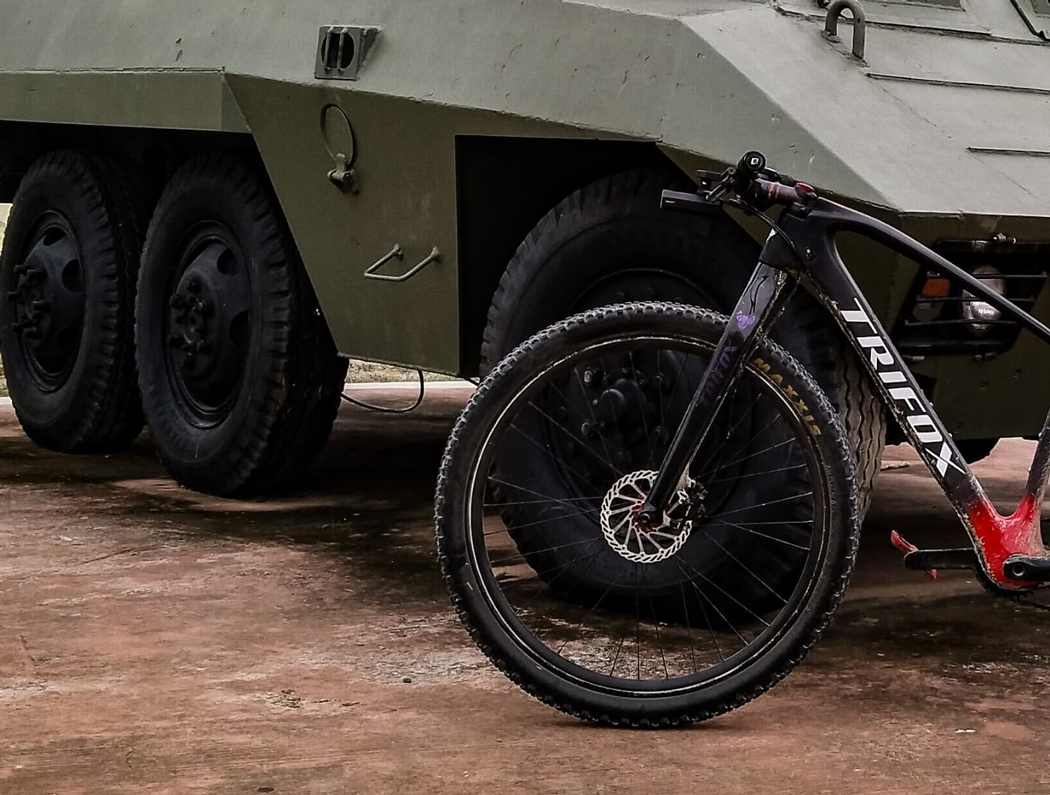
When it comes to mountain biking, every component of your bike plays a crucial role in shaping your riding experience. Among these, the fork is indispensable, directly affecting control, weight, and overall bike performance. The 29er rigid fork has become a popular choice for many riders seeking efficiency and simplicity. Advantages of a 29er Rigid Fork 1. Weight Reduction: One of the most significant benefits of a rigid fork is its lightweight nature. Unlike suspension forks, rigid forks eliminate the extra weight added by suspension components, which can be particularly advantageous for riders looking to enhance their biking speed and efficiency. This weight reduction translates into easier handling and quicker climbs, allowing you to conserve energy over long distances. 2. Increased Control and Precision: With no suspension to compress or rebound, a rigid fork offers direct and immediate feedback from the terrain. This characteristic provides riders with exceptional control and precision, making technical maneuvers more predictable and stable. It's especially beneficial for riders who prefer a more direct connection to the trail. 3. Durability and Low Maintenance: Rigid forks are known for their durability and simplicity. Without moving parts that require regular servicing, such as seals and bushings found in suspension forks, maintenance is minimal. This reliability makes rigid forks perfect for bikepacking and long-distance rides where maintenance opportunities might be limited. Why Choose a 29er? The 29-inch wheel size, or 29er, offers several benefits, such as better momentum retention, improved rollover ability on obstacles, and enhanced traction. When combined with a rigid fork, a 29er setup can offer a smooth and efficient ride on a variety of terrains. The larger wheel size helps maintain speed over rough terrains and provides a more stable ride, making it ideal for endurance cycling and cross-country trails. Features of Trifox Rigid Forks Trifox Bike offers an impressive range of carbon rigid forks that are designed to meet the diverse needs of mountain bikers: - Carbon Construction: Trifox’s rigid forks, like the Carbon MTB Fork QMK100, are constructed from high-quality carbon fiber, which ensures they are not only lightweight but also incredibly strong and durable. The carbon material also contributes to vibration dampening, offering a more comfortable ride compared to metal forks. - Competitive Pricing and Offers: Trifox provides excellent value for their products, often offering significant discounts, such as the 41% off on the QMK100 model. This affordability makes it easier for riders to access high-quality components without breaking the bank. Tips for Choosing the Right Rigid Fork 1. Compatibility: Ensure the fork you choose is compatible with your bike frame and wheel size. A 29er fork should match a 29-inch wheel setup. 2. Material Quality: Opt for forks made from high-grade materials like carbon fiber for the best combination of weight savings and durability. 3. Terrain Suitability: Consider the type of terrain you frequently ride on. A rigid fork is ideal for smoother trails and cross-country rides. 4. Budget: Set a budget and look for options within that range that offer the best quality and features. Trifox’s offerings provide great value for money. Conclusion Opting for a 29er rigid fork can redefine your mountain biking experience by providing unmatched control, reduced weight, and minimal maintenance. Trifox Bike emerges as a leading choice with its high-quality carbon constructions and customer-friendly services. Whether you're an avid cross-country rider or someone seeking a reliable fork for everyday trails, a 29er rigid fork from Trifox can be an excellent addition to your mountain bike, enhancing both performance and enjoyment on every ride.
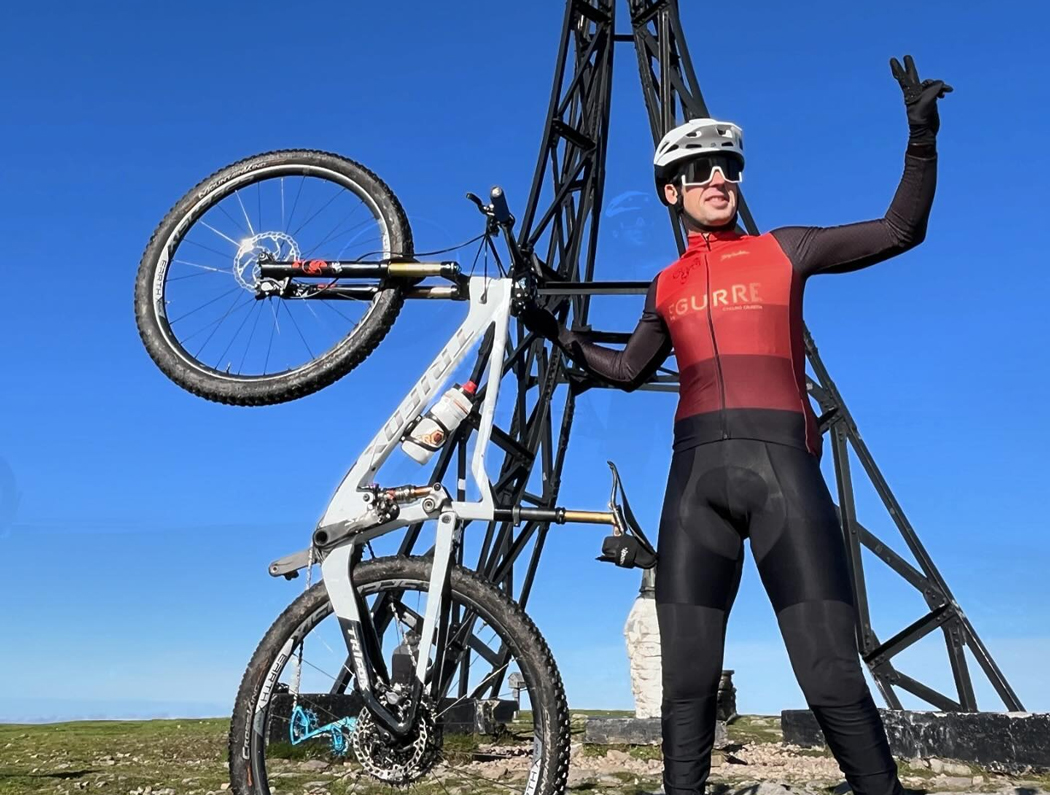
Choosing the right full suspension bike can transform your off-road biking experience, offering enhanced comfort, control, and performance. Full suspension bikes are designed to handle rough terrains by absorbing shocks from both the front and rear, making them ideal for trail and mountain biking. Here’s a comprehensive guide to help you choose the perfect full suspension bike, using insights from Trifox Bike's MFM100 full suspension carbon MTB frame. Understanding the Benefits of Full Suspension Bikes Full suspension bikes provide the advantage of dual shock absorption, which significantly reduces rider fatigue and enhances traction on uneven terrains. This dual suspension system allows for better handling and control, especially on descents and technical trails. The added comfort and control make full suspension bikes a popular choice for both competitive riders and casual adventurers. Key Features of the MFM100 Frame The Trifox MFM100 frame exemplifies what to look for in a high-performance full suspension bike: 1. Material and Weight: Made from T800 carbon fiber, the MFM100 frame is ultra-lightweight while maintaining strength and durability. Weighing just over 2kg, it provides a great balance for speed and endurance. 2. Boost Design: With a 148 x 12mm spacing, it enhances the rear wheel's strength and stiffness, accommodating up to 2.35" tires for better traction and stability. 3. Geometry and Suspension: The frame features a 68.5° head tube angle and a customizable rear shock mount, allowing riders to fine-tune their setup for optimal performance and comfort. 4. Internal Cable Routing: This feature offers a sleek, uncluttered look while protecting cables from the elements, contributing to the bike's overall aesthetic and aerodynamics. Steps to Choose the Right Full Suspension Bike 1. Determine Your Riding Style: Consider the type of terrain you plan to tackle. Trail bikes are versatile and suitable for various conditions, while downhill bikes are optimized for steep descents. 2. Choose the Right Frame Material: Carbon fiber frames like the MFM100 are preferred for their lightweight and strong construction, which enhances handling and speed. 3. Consider Suspension Type and Travel: Look for bikes with adjustable suspension to tailor your ride based on the trail conditions. The MFM100 offers travel options of 100mm to 115mm, providing flexibility for different terrains. 4. Evaluate Bike Geometry: Geometry affects handling and comfort. A longer wheelbase and slack head angle offer stability on descents, while a steeper seat tube angle improves climbing efficiency. 5. Assess Component Quality: Pay attention to the quality of components, such as the drivetrain, brakes, and wheels. High-quality components like those offered by Trifox ensure reliability and performance. 6. Test Ride If Possible: If you have the opportunity, test ride different models to feel the differences in handling and comfort. This can provide invaluable insight into what fits your style and preferences. Tips for Making the Right Choice - Budget Considerations: Determine your budget beforehand and focus on finding the best quality within that range. Trifox offers competitive pricing on high-performance frames like the MFM100. - Future Upgrade Potential: Consider a bike that allows for easy component upgrades. This flexibility can help you improve performance as your skills advance. In conclusion, selecting the right full suspension bike involves understanding your needs, evaluating technical specifications, and making informed decisions based on your riding style and goals. The Trifox MFM100 frame is an excellent example of a high-quality option that caters to various biking needs, making it a strong contender for anyone looking to enhance their off-road adventures. By following these steps, you can find a bike that delivers both excitement and comfort on every ride.

Join everyone to Show your a Trifox product picture to mark Trifox's 8th Anniversary. And you can easily win a super prize. Try Your Luck NOW! Prizes are: Special Prize (1 Person):Your Wish Trifox Goods 1st Prize(1 Person):Carbon fiber Road Bike Frame X16 2nd Prize (2 Persons):Alloy Bike Wheels Or Bicycle Dropper Seatpost 3rd Prize(3 Persons):Carbon Flat Bar FHB100+ Bike Grips MBT100 Rules: 1. Please select the best Trifox product picture (No matter which store you purchased Trifox products from), and send the high-quality picture to our Email as an attachment. Can send your social media platform to us if you have. You are also welcome to share it on social media and @trifoxbike official account. 2. If you are willing, you can share your story with Trifox and your wishes for the Trifox anniversary (you will be lucky enough to get a "special prize") and send it to our email along with the pictures. 3. After the deadline for sending pictures, our staff will collect all Trifox pictures and display them in a form; You can share the form link with your friends to vote (everyone can participate, each person can only vote once), the one with the most votes will win, and the winner will be announced on December 7. Email: business@trifoxbike.com Email Subject: Name +product+ Country+ or Trifox User Story Image Tips: Any Trifox product images you have, whether it is a completed bike/bike frame/bike wheelset/bike handlebar/wheels hub, etc. Walk us through your cycling journey! Trifox turns 8 this year, and this can't happen without your support! On December 2, We Will show the bike pictures all have shared with Trifox, and we would like to invite you to cast your vote. Picture Deadline: 2024/11/30 Everyone votes time: 2024/12/02--12/04 Winner Announcement: 2024/12/07 Good Luck!
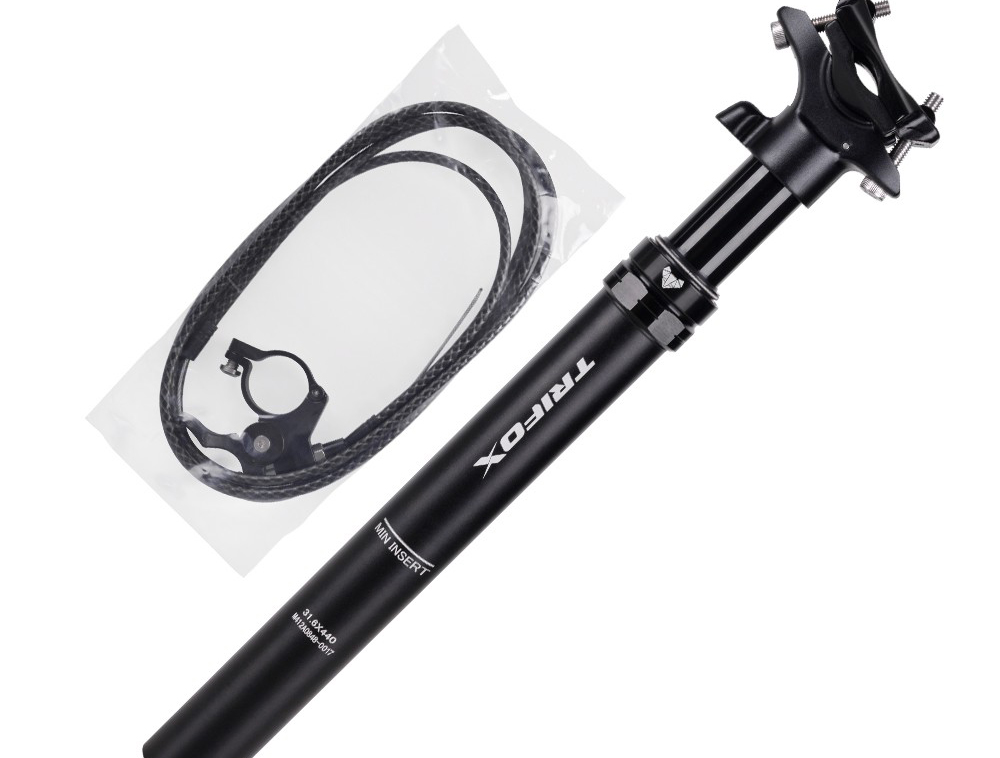
Cycling enthusiasts know that every component of a bike contributes to the overall riding experience. One often overlooked part is the seatpost, which can significantly impact comfort, performance, and bike handling. Among the various options available, the 27.2 carbon seatpost stands out for its unique benefits, making it a top choice for many cyclists. The Benefits of a 27.2 Carbon Seatpost 1. Weight Reduction: Carbon seatposts are renowned for their lightweight properties. The 27.2 mm diameter is particularly popular because it offers a perfect balance between strength and weight savings. A lighter seatpost reduces the overall bike weight, enhancing acceleration and climbing efficiency, especially beneficial for competitive cyclists. 2. Vibration Dampening: Carbon fiber is excellent at absorbing road vibrations, providing a smoother ride. This feature is crucial for long-distance cyclists who need to minimize fatigue over extended rides. The 27.2 carbon seatpost helps in reducing the vibrations felt through the saddle, improving comfort significantly. 3. Performance Improvement: By lowering the bike's weight and providing better vibration absorption, a carbon seatpost can dramatically improve ride quality and performance. Cyclists often experience better control and responsiveness, which is essential for high-speed descents and technical terrains. Why Trifox Bike? Trifox Bike has established itself as a leader in manufacturing high-quality carbon bike components, including seatposts. Here are some reasons why Trifox is an excellent choice for your next bike upgrade: - Quality and Durability: Trifox seatposts, such as the SLS21 Bike Seatpost, are crafted from premium carbon fiber, ensuring durability and longevity. These seatposts are tested for strength and resilience, providing peace of mind for cyclists tackling challenging routes. - Affordable Pricing: Trifox offers competitive pricing on their carbon seatposts, with discounts making them accessible to a broad range of cyclists. For instance, the AP316 Dropper Seatpost is available at a 58% discount, showcasing Trifox's commitment to affordability. - Customer Support and Convenience: With free shipping on orders over $50 and 24/7 live chat support, Trifox ensures a seamless shopping experience. Their secure payment options add an extra layer of trust for customers purchasing online. Tips for Choosing the Right Seatpost When selecting a 27.2 carbon seatpost, consider the following factors to ensure it meets your needs: - Compatibility: Ensure the seatpost diameter matches your bike's frame specifications. A 27.2 mm seatpost is standard, but always double-check your bike's requirements. - Riding Style: Consider your riding style and conditions. If you frequently ride on rough terrains, prioritize seatposts known for excellent vibration dampening. - Adjustment and Fit: Look for seatposts with easy adjustability for saddle height and angle, ensuring you can fine-tune your position for maximum comfort. - Material Quality: Opt for seatposts made from high-grade carbon fiber for the best balance between weight, strength, and durability. In conclusion, choosing a 27.2 carbon seatpost can significantly enhance your cycling experience by offering weight savings, improved comfort, and enhanced performance. Trifox Bike provides a range of high-quality and affordable options, making it an ideal choice for cyclists looking to upgrade their bike components. By focusing on compatibility, riding style, and material quality, you can select a seatpost that perfectly complements your cycling needs and preferences.
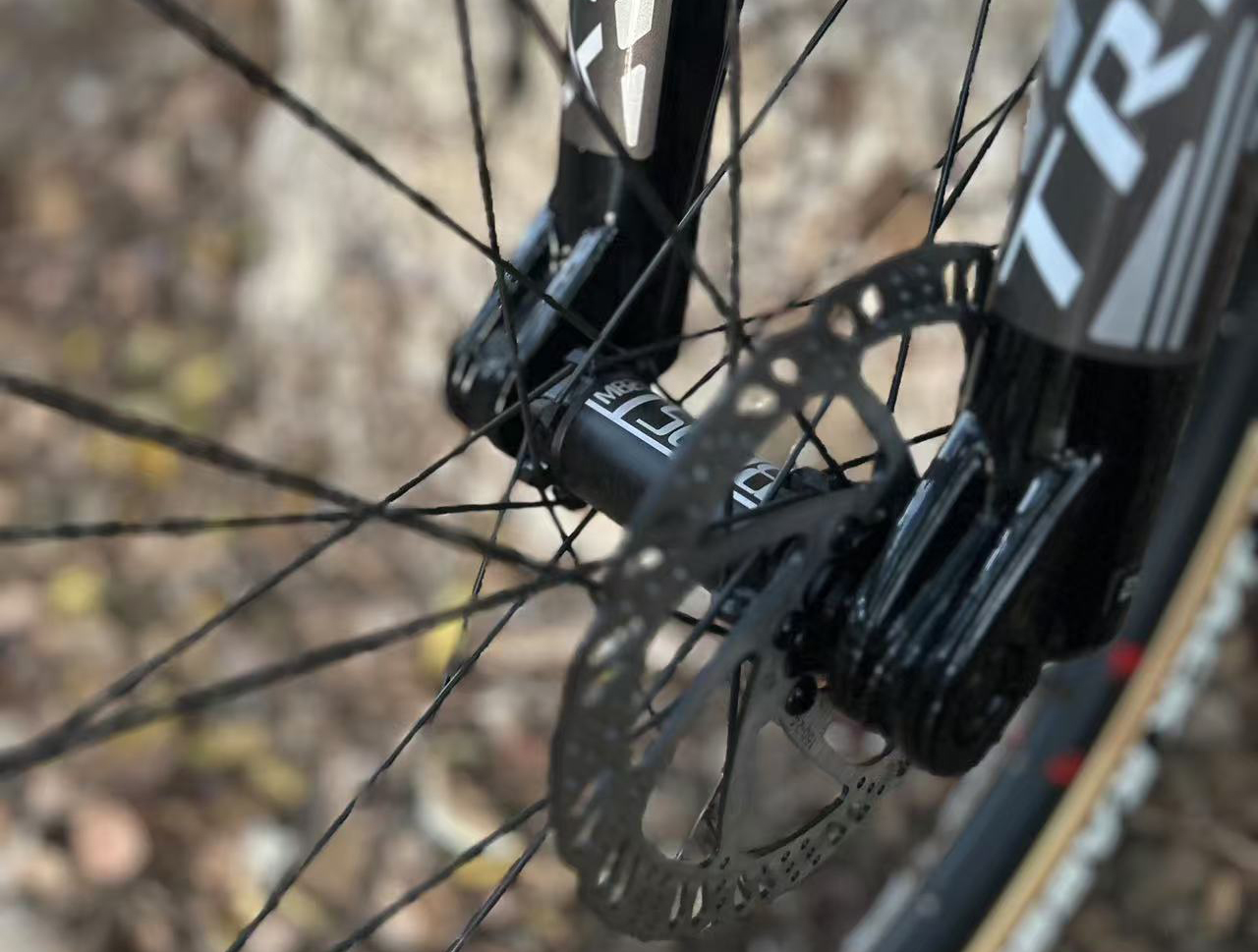
Bicycle wheels are fundamental to both the efficiency and performance of a bike. Understanding the essential components that make up a bicycle wheel can help ensure better maintenance and upgrades, leading to a more enjoyable ride. Let's delve into the key wheel parts and explore how Trifox Bike offers affordable, high-quality options for these components. Hubs: The Heart of the Wheel Hubs are the central part of the wheel that connects to the bike frame via the axle. They house the bearings that allow the wheel to spin smoothly. High-quality hubs, like those offered by Trifox Bike, such as the Bike Hub M827, are crucial for reducing friction and improving ride efficiency. Choosing a robust hub ensures durability and consistent performance, particularly for rough terrains or competitive riding. Axles: The Wheel's Backbone Axles run through the hubs and connect the wheels to the frame, supporting the bike's weight and enabling the wheels to rotate. Different types of axles, such as thru-axles and skewers, have unique benefits. Thru-axles, like the Rear Thru Axle Skewer ATS100 from Trifox, provide greater stiffness and security, essential for mountain biking and disc brake setups. Ensuring the right axle choice is crucial for maintaining bike stability and alignment. Freehub Bodies: Power Transfer Agents A freehub body is part of the rear hub, allowing the bike to coast while also housing the cassette. It is responsible for transferring pedal power to the wheel, making it a key component for performance. Trifox's Freehub For M827 exemplifies a high-quality freehub that ensures efficient power transfer and reliable engagement. Investing in a durable freehub body enhances your bike's responsiveness and longevity. End Caps & Conversion Kits: Adaptability and Customization End caps and conversion kits are small yet vital components that allow for hub customization and compatibility with different frame standards. These parts, such as the Hub End Cap Adapter CG827 from Trifox, enable cyclists to adapt their wheels to varying axle sizes or hub types. This flexibility is crucial for those upgrading their bikes or switching between different riding styles. Benefits of Choosing High-Quality Wheel Parts Opting for high-quality wheel parts can significantly impact your bike's performance and maintenance needs. Quality components reduce the likelihood of breakdowns, provide smoother rides, and often come with better warranties. Trifox Bike offers a range of wheel parts that combine affordability with top-notch quality, making premium cycling experiences accessible to all. Tips for Purchasing Wheel Parts 1. Compatibility: Ensure the parts are compatible with your existing bike setup. Check specifications like axle size and hub type. 2. Material and Build: Look for parts made from durable materials that can withstand frequent use and varied conditions. 3. Reviews and Reputation: Research customer reviews to gauge the reliability and performance of the parts. 4. Warranty and Support: Choose parts from manufacturers that offer solid warranties and reliable customer support for peace of mind. Conclusion Understanding the essential parts of a bicycle wheel—hubs, axles, freehub bodies, and end caps—can empower cyclists to make informed decisions about maintenance and upgrades. Trifox Bike stands out as a reliable source for high-quality, affordable wheel parts, ensuring that every ride is smooth, efficient, and enjoyable. By focusing on compatibility, material quality, and manufacturer support, you can enhance your cycling experience with confidence.
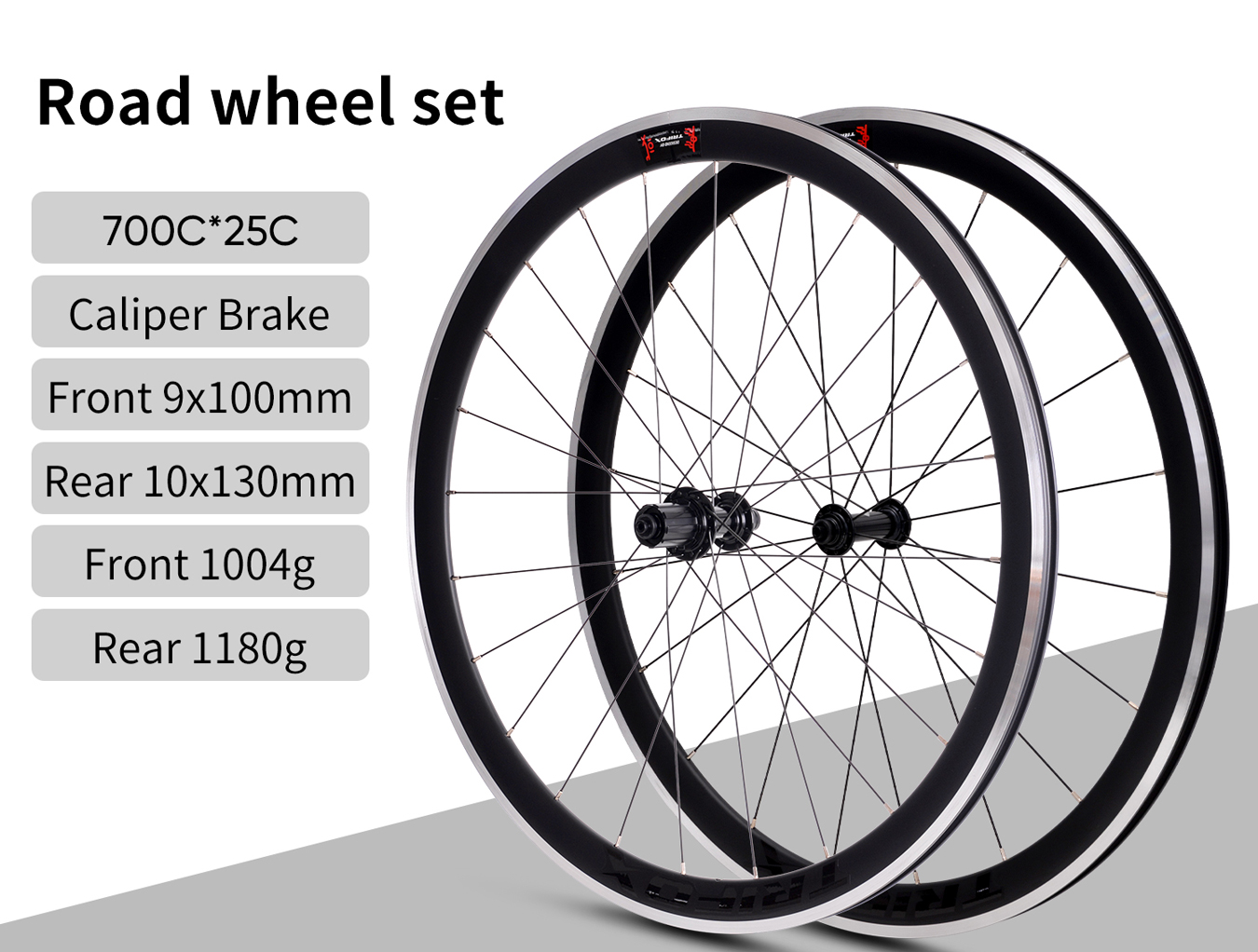
Cycling enthusiasts know that upgrading to a set of high-quality wheels can make a significant difference in performance and ride quality. Whether you're racing or simply seeking a smoother ride, carbon road bike wheels offer unparalleled benefits. But where can you find the best place to buy these wheels without breaking the bank? Look no further than Trifox Bike. The Appeal of Carbon Road Bike Wheels Carbon fiber wheels are prized for their lightweight structure and aerodynamic design, which help reduce drag and increase speed. Their material properties provide exceptional rigidity, allowing for precise handling and improved power transfer during climbs and sprints. Additionally, carbon wheels absorb vibrations better than their alloy counterparts, ensuring a more comfortable ride over long distances. Why Choose Trifox Bike for Your Wheel Upgrade? Trifox Bike is a standout choice for those seeking affordable yet high-quality carbon road bike wheels. As a prominent Chinese manufacturer, Trifox offers a range of wheelsets that cater to different cycling needs: 1. Diverse Options: Trifox provides carbon road wheels suitable for both disc brake and V brake systems. Whether you're upgrading a racing bike or a touring setup, their selection ensures compatibility with your existing gear. 2. Competitive Pricing: With discounts reaching up to 46%, Trifox Bike makes carbon wheels more accessible. For instance, the Carbon Road Bike Wheels WT18 is available for $429, down from $799, offering substantial savings. 3. Quality and Reliability: Reviews from satisfied customers highlight the durability and performance of Trifox wheels. Constructed with precision and tested for quality, these wheels promise to deliver on both performance and longevity. 4. Customer Support and Convenience: Trifox provides free shipping on orders over $50, ensuring your new wheels arrive quickly and without extra cost. Their 24/7 live chat support is available to address any inquiries or issues, enhancing the buying experience. What to Look for When Buying Bike Wheels When selecting the perfect set of wheels, consider the following factors to ensure you're getting the best value: - Weight: Lighter wheels can significantly enhance acceleration and climbing efficiency. Consider the weight of the wheelset in relation to your cycling goals. - Brake Compatibility: Ensure the wheelset is compatible with your bike's braking system, whether it's disc or V brakes. - Aerodynamics: For those focused on speed, wheels with a deep rim profile can reduce air resistance and improve performance. - Durability: Check reviews and specifications to confirm that the wheels can withstand your typical riding conditions, whether it's smooth tarmac or rougher paths. - Warranty and Support: A solid warranty and responsive customer support are crucial for peace of mind, especially when investing in premium components. Conclusion Finding the best place to buy bike wheels involves balancing quality, performance, and cost. Trifox Bike provides an excellent solution for cyclists looking to upgrade their road bike wheels without overspending. By focusing on essential features like weight, brake compatibility, and customer reviews, you can confidently select a wheelset that enhances your cycling experience. Whether you're a competitive racer or a weekend rider, Trifox Bike offers a compelling combination of affordability and quality that's hard to beat.
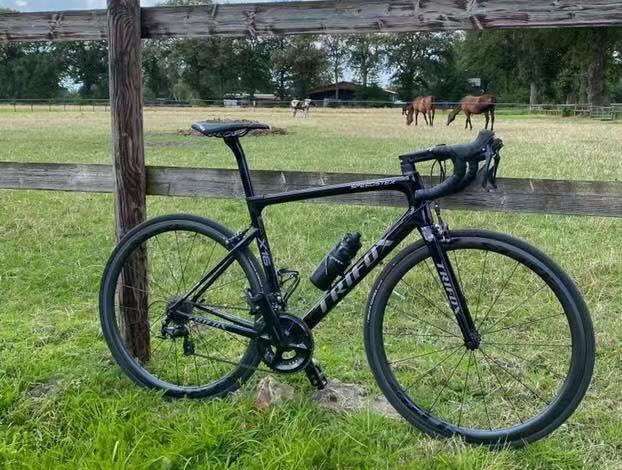
When it comes to cycling, carbon road bikes are the gold standard for those seeking a lightweight, durable, and performance-driven experience. However, finding an affordable option without compromising quality can be challenging. Fortunately, brands like Trifox Bike offer a compelling solution with their range of carbon road bike frames. The Appeal of Carbon Road Bikes Carbon fiber bikes are renowned for their strength-to-weight ratio, providing a smooth and efficient ride. The material's ability to absorb road vibrations enhances comfort, making long rides more enjoyable. Additionally, the flexibility in design allows manufacturers to optimize aerodynamics and stiffness where it's needed most, translating to better performance on the road. Trifox Bike: A Budget-Friendly Option Trifox Bike stands out as a budget-friendly manufacturer offering high-quality carbon road bike frames. Their frames are available in various styles, including AERO style, lightweight style, and both quick-release and thru-axle disc brake options. This variety ensures that you can find a frame that matches your riding style and preferences. Affordable Pricing and Discounts One of the most appealing aspects of Trifox Bike's offerings is the affordability. With discounts ranging up to 59%, you can purchase a carbon road bike frame for as low as $399. For instance, the Carbon Road Bike Frame X8QR is available at a significant markdown, making it an attractive option for cost-conscious buyers. Such competitive pricing ensures you get the best value for your investment. Features to Look For When purchasing a cheap carbon road bike, it's crucial to consider several factors to ensure quality and performance: 1. Frame Weight and Material: Opt for a lightweight frame that offers durability and strength without adding unnecessary weight. 2. Aerodynamics: Consider frames with aerodynamic designs, particularly if speed is a priority in your rides. 3. Brake Compatibility: Choose between quick-release V brake and thru-axle disc brake styles based on your braking preference and terrain. 4. Customer Reviews: Checking reviews can provide insights into the frame's performance and reliability. 5. Warranty and Support: Ensure the manufacturer offers a solid warranty and customer support, giving you peace of mind in your purchase. Why Choose Trifox Bike? Trifox Bike not only offers affordable carbon frames but also provides a comprehensive online shopping experience. They offer free shipping on orders over $50, ensuring that your purchase arrives quickly and without additional cost. Moreover, their 24/7 live chat support means you can get assistance whenever needed. With secure payment options, purchasing from Trifox is both safe and convenient. Conclusion Finding the best cheap carbon road bike involves balancing cost with features and quality. Trifox Bike's range of carbon road bike frames presents an excellent option for those seeking performance without breaking the bank. By focusing on essential features like weight, aerodynamics, and customer reviews, you can ensure you select a bike that offers both value for money and a superior riding experience. Whether you're upgrading your current bike or buying your first carbon frame, Trifox Bike provides an accessible entry point into the world of high-performance cycling.
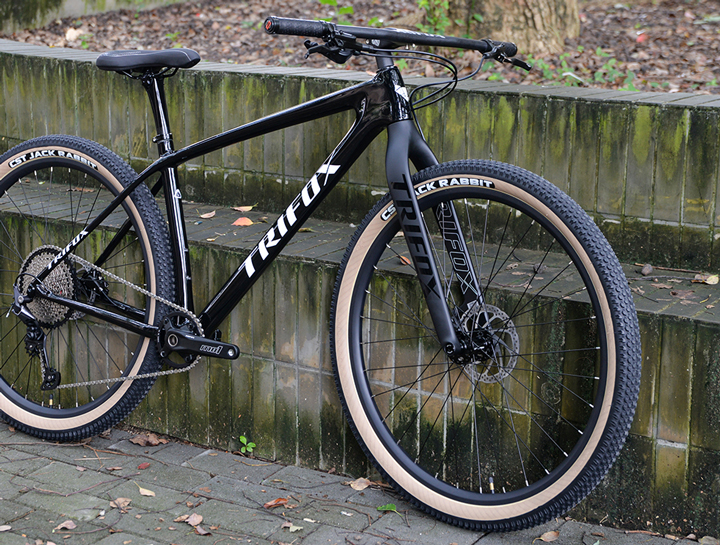
Customizing a rigid fork for your bike can significantly enhance your riding experience, particularly when using high-quality carbon models. Rigid forks, such as those offered by Trifox Bike, provide a unique blend of lightweight performance and durability, making them an excellent choice for mountain biking enthusiasts. Benefits of Rigid Forks Rigid forks are known for their simple design and efficiency. Unlike suspension forks, they do not have moving parts that can wear out, leading to less maintenance and a lighter overall bike weight. This simplicity also translates into improved responsiveness and precision, which is ideal for riders tackling smooth trails or urban environments. Carbon rigid forks, like Trifox's QMK100 and TMK200, further enhance these benefits by offering exceptional strength-to-weight ratios. This means you can enjoy a sturdy ride while minimizing the load you carry, which is crucial for long-distance rides or climbing steep terrains. Customization Options 1. Weight Adjustments: Depending on your riding style, you might prioritize either weight or strength. Carbon rigid forks are inherently light, but you may want a specific weight distribution for your setup. Choosing a fork like the Trifox Carbon MTB Fork QMK100 allows you to enjoy a balanced ride with an optimized weight for climbing or sprinting. 2. Terrain Suitability: Your choice of rigid fork can be adapted to different terrains. For instance, the TMK200 model is designed to handle rugged trails with ease, providing stability and control. Customizing your fork to match your primary riding terrain can enhance your bike’s performance, whether you’re navigating city streets or mountain paths. 3. Riding Style: Consider your riding style when customizing your fork. If you’re a commuter, you might want a fork that offers quick handling and precision. Mountain bikers, on the other hand, might prioritize strength and durability to withstand challenging off-road conditions. Installation and Maintenance Customizing your rigid fork also involves proper installation and maintenance to ensure optimal performance. Here are some tips: - Installation: When installing a new rigid fork, ensure that it is compatible with your bike's frame and wheel size. Follow the manufacturer’s guidelines closely, and consider having a professional bike mechanic assist you if you’re unsure. - Maintenance: Keep your rigid fork clean and regularly check for any signs of damage or wear. Although rigid forks require less maintenance than suspension forks, inspecting them periodically ensures longevity and reliability. Choosing the Right Fork Selecting the right rigid fork involves balancing performance and comfort. Trifox’s range of carbon rigid forks offers various options to suit different preferences. The QMK100, for example, is an excellent all-rounder that offers a good blend of weight and durability, while the TMK200 might cater more to those seeking a rugged, trail-ready option. Conclusion Customizing a rigid fork for your bike is more than just a technical upgrade; it’s about enhancing your overall biking experience. By knowing how to adjust your fork for weight, terrain, and riding style, you can significantly improve your bike’s performance and your comfort on the ride. Whether you're choosing a Trifox QMK100 for its lightweight advantage or the TMK200 for its robust design, understanding the customization process and maintenance needs will help you make the most out of your biking adventures. Embrace the simplicity and precision of rigid forks and enjoy the ride!

















